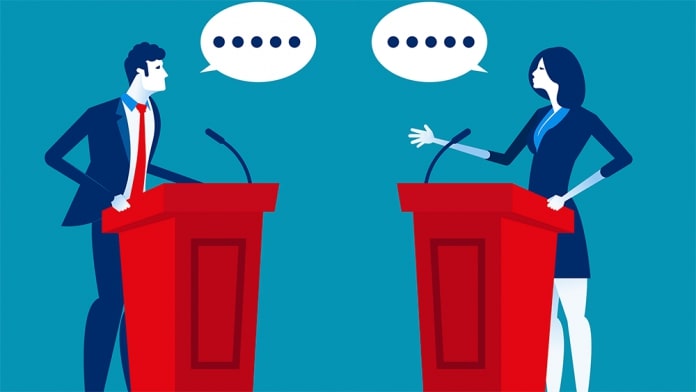India has a rich history of debating, with the art of argumentation and persuasion being revered as a cornerstone of intellectual development. However, in recent years, the art of debating has been arguably overshadowed by the omnipresence of popular Indian television media. This essay will explore how popular Indian television media has contributed to the decline of the art of debating in India, with examples to support this argument.

1. Sensationalism over substance:
"Rather than providing nuanced and balanced coverage, certain news channels use provocative headlines and soundbites to attract viewers. This approach to reporting may generate higher ratings, but it does little to foster the type of substantive debate that is essential to the art of debating."
Example: In 2019, when India and Pakistan were on the brink of war, some Indian news channels resorted to sensationalist coverage, with headlines like "India-Pakistan war imminent" and "India strikes back." Such coverage failed to provide a nuanced understanding of the situation and fueled jingoism rather than encouraging constructive debate.
2. Polarization and divisiveness:
"Such channels often provide a platform for individuals who espouse extreme positions and use aggressive rhetoric, rather than engaging in respectful and constructive debate. This approach to reporting may appeal to a particular demographic, but it does little to encourage the type of open-mindedness and intellectual curiosity that is essential to the art of debating."
Example: During the Citizenship Amendment Act (CAA) protests in 2019-2020, some news channels took a partisan stance, with some channels portraying the protesters as anti-national and the government as patriotic. This divisive coverage did little to encourage constructive debate and instead amplified partisan views.
3. Entertainment over education:
"These shows may be entertaining, but they do little to cultivate the type of critical thinking skills and intellectual curiosity that are essential to the art of debating."
Example: Reality TV shows like Bigg Boss and Indian Idol are popular across India, but they have little to do with intellectual pursuits. While they may be entertaining to watch, they do little to foster the type of critical thinking and intellectual engagement that are essential to the art of debating.
Overall, these examples illustrate how popular Indian television media has contributed to the decline of the art of debating by prioritizing sensationalism, polarization, and entertainment over substance, respect, and education.

Comments